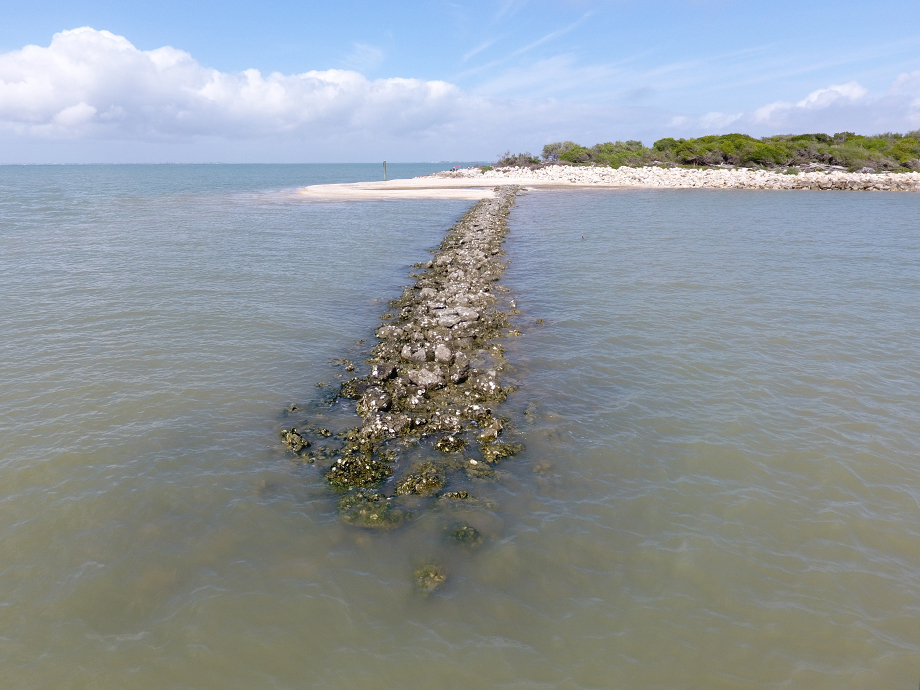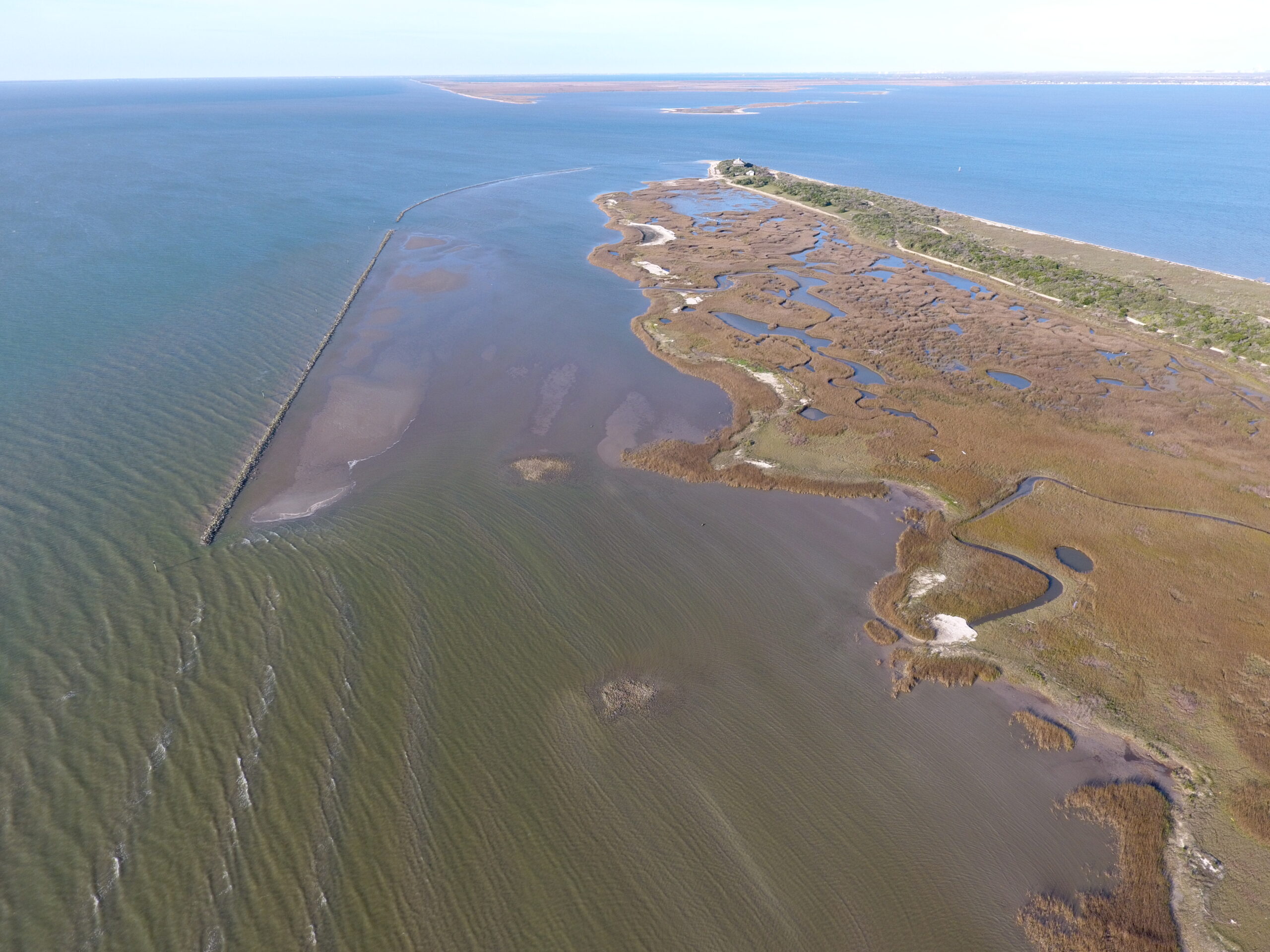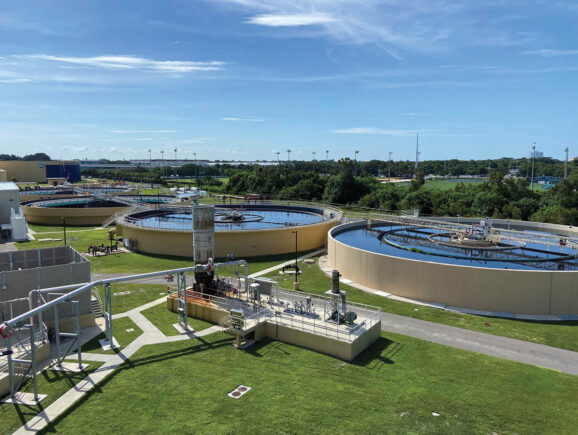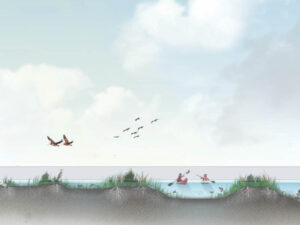Coastal Resiliency: Enlisting Oysters for Shoreline Protection
As our coastal clients and communities face challenges like erosion, sea level rise, storm surge, and more frequent disasters, Freese and Nichols is helping them combat these issues to protect their residents and assets. We have a long history of protecting the livelihoods and quality of life for those who live close to the water, both upland and coastal. These coastal communities, along with the built and natural infrastructure that surround them, are the focus of our Coastal Resiliency Initiative. We are building on long-standing client relationships and projects for local, state and federal clients along the Gulf of Mexico and the East Coast.
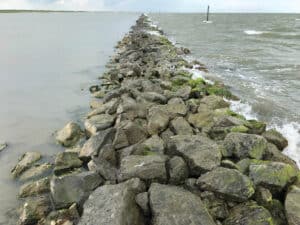
Whether it’s protecting infrastructure or shorelines, the wide range of our resiliency projects requires expertise from across the firm.
The Schicke Point Living Breakwater Resiliency and Extension project is a perfect example of how Freese and Nichols integrated multiple levels of shoreline protection. Schicke Point is located on the mid-coast of Texas in Matagorda Bay. Since 1993, nearly 300 feet of ecologically valuable marsh has retreated, converting 40 acres of marsh to open water.
The solution was to design and construct a living breakwater to protect and restore a combination of public and private shorelines. Living breakwaters are designed to dissipate wave energy by creating a barrier between open water and the shoreline. They also incorporate natural habitat components for oysters and fish while providing protection to the coastline.
“It’s a different approach to coastal resiliency,” said Coastal Scientist Dave Buzan. “When people think of coastal resiliency, they often think of protecting infrastructure and we’re trying to encourage a more holistic viewpoint that not only protects infrastructure but restores ecological structure and function to the system.”
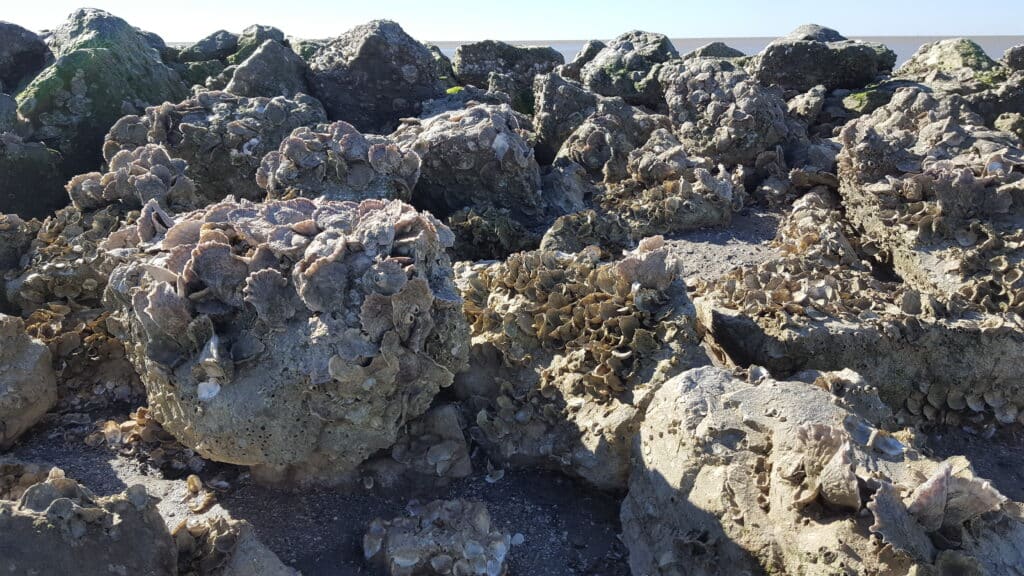
Freese and Nichols designed Schicke Point’s living shoreline at an elevation of one foot above mean lower low Water because the structure was purposely designed to be colonized by oysters (which would fuse the rocks together and grow vertically as sea levels rise).
“We know that worldwide the oyster habitat has declined by over 85%,” Dave said. “Three weeks after construction began, young oysters were colonizing the living shoreline. Oysters also provide a lot of ecological services and functions that other species in the estuary rely on.”
“As sea level rises, oysters will continue colonizing the breakwater structure,” Tony said. “The breakwater will actually grow in height as the sea level rises.”
Using oysters and natural processes to strengthen and grow the structure was more affordable than using rock entirely. But the oyster colonization is just one way this project projects the shoreline.
“The breakwater reduces wave energy, and the reduced energy allows sediment to fall out,” Dave said. “The sediment creates a habitat for other things to grow. For example, we’ve seen seagrass colonize the area between the breakwater and the shore. We’re also seeing the marsh regrowing in the area. Marshes are an important defense from storms that impact shorelines.”
The project design allows for additional future extensions of the living breakwater, beneficial placement of dredged sediment and voluntary restoration of marsh and oysters. It also protects more than 140 acres of intertidal marsh.
Coastal Resiliency Initiative
Freese and Nichols Coastal Resiliency Initiative aligns with our vision of making a positive impact on the world we inhabit. It’s also linked to our corporate responsibility structure, which aims for a balanced strategy towards community guardianship. This involves consistent evaluation of metrics, feedback from clients and employees, and ongoing examination of environmental and societal needs.
Our coastal clients and communities are dealing with a multitude of challenges such as erosion, rising sea levels, increased storm surges, and more frequent disasters. Our aim is to help them tackle these problems to ensure the safety of their residents and the protection of their assets.


